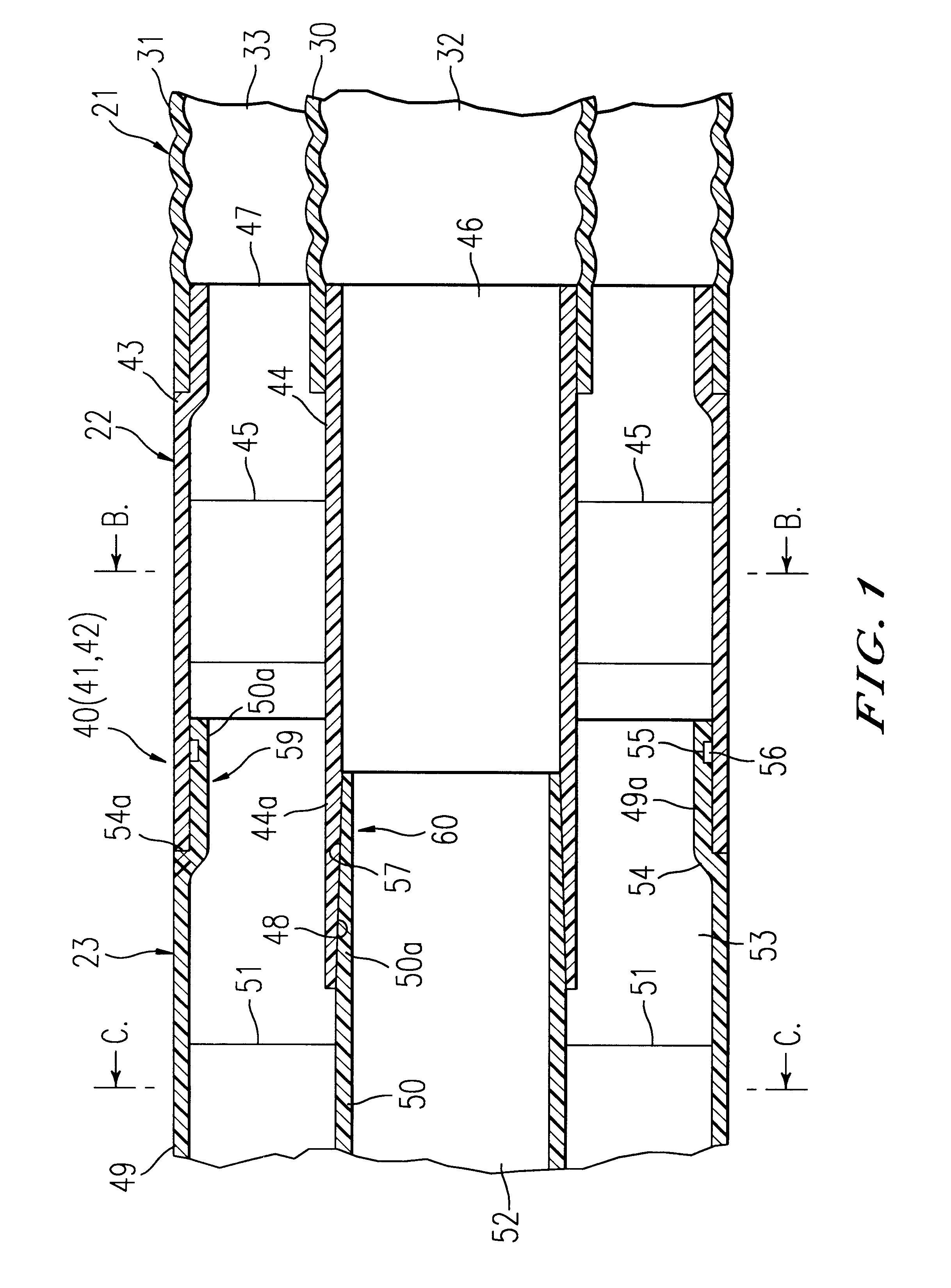Vacuum-cleaner with recirculation of exhaust air
a vacuum cleaner and exhaust air technology, applied in the field of vacuum cleaners, can solve the problems of difficult to simply ensure air tightness, inconvenience, and difficulty in simple cleaning, and achieve the effects of reducing the weight of lead wires, facilitating the layout of lead wires, and shortening the length of lead wires
- Summary
- Abstract
- Description
- Claims
- Application Information
AI Technical Summary
Benefits of technology
Problems solved by technology
Method used
Image
Examples
first embodiment
[First Embodiment]
Referring to FIG. 6, a vacuum cleaner has the following elements; a cleaner main body 20; a dust collecting hose (flexible connecting pipe) 21 connected to the cleaner main body 20; a handling side connecting pipe (handling side pipe) 22 fixed at a leading end portion of the dust collecting hose 21; connecting pipes for extension (extension pipes) 23 and 23' connected in series to the handling side connecting pipe 22; and a suction port body 24 connected to the handling side connecting pipe 22 via the extension connecting pipes 23 and 23'.
As shown in FIG. 7, a dust collecting chamber 25 is formed in a front portion of the cleaner main body 20, and a fan chamber 26 is formed in a rear portion of the dust collecting chamber 25. A paper pack filter 27 is disposed as a dust collecting filter in the dust collecting chamber 25, and an electric fan 28 with its suction side 28a communicated to the dust collecting chamber 25 is disposed in the fan chamber 26. An exhaust por...
second embodiment
[Second Embodiment]
Referring to FIGS. 8 and 9, there is a cleaner main body 120 of a vacuum cleaner; a dust collecting chamber 121 formed in a front portion of the cleaner main body 120; a lid body (dust collecting chamber opening / closing lid) 122 for opening / closing the dust collecting chamber 121; a hose connecting port 123 formed in the lid body 122; and a paper pack filter (dust collecting filter) 124 disposed in the dust collecting chamber 121.
A fan chamber 125 is formed in a rear portion of the cleaner main body 120, and an electric fan 126 is disposed in the fan chamber 125. A suction port (suction side) 126a of the electric fan 126 is communicated to the dust collecting chamber 121. The rear portion of the fan chamber 125 is taken as an exhaust chamber 127 separated trout the dust collecting chamber 121, and an exhaust port (exhaust side) 126b of the electric fan 126 is opened in the exhaust chamber 127. An exhaust passage (exhaust air passage) 128 communicated to the exhaus...
third embodiment
[Third Embodiment]
A hose 230 shown in FIGS. 15 to 17 has a dual structure in which a suction hose 234 is mounted in an exhaust hose 233. When the hose 230 in FIG. 17 is connected to a connecting port 225 of the cleaner main body 20, the suction hose 234 in FIG. 15 is communicated to the dust collecting chamber 25 in FIG. 16 and the exhaust hose 233 is communicated to the exhaust chamber 26b.
A space between the exhaust hose 233 and the suction hose 234 is taken in FIG. 15 as an exhaust air passage 233A, and the interior of the suction hose 234 is taken as a suction air passage 234A. A lead wire L extending from the cleaner main body 20 in FIG. 16 to a handling side operating pipe 222 is laid out in FIG. 15 in the exhaust air passage 233A. A conductive terminal (not shown) connected to a conductive socket (not shown) of the connecting port 225 in FIG. 17 is connected to an end portion, on the cleaner main body 20 side, of the lead wire L in FIG. 15. An end portion, on the handling sid...
PUM
 Login to View More
Login to View More Abstract
Description
Claims
Application Information
 Login to View More
Login to View More - R&D
- Intellectual Property
- Life Sciences
- Materials
- Tech Scout
- Unparalleled Data Quality
- Higher Quality Content
- 60% Fewer Hallucinations
Browse by: Latest US Patents, China's latest patents, Technical Efficacy Thesaurus, Application Domain, Technology Topic, Popular Technical Reports.
© 2025 PatSnap. All rights reserved.Legal|Privacy policy|Modern Slavery Act Transparency Statement|Sitemap|About US| Contact US: help@patsnap.com



